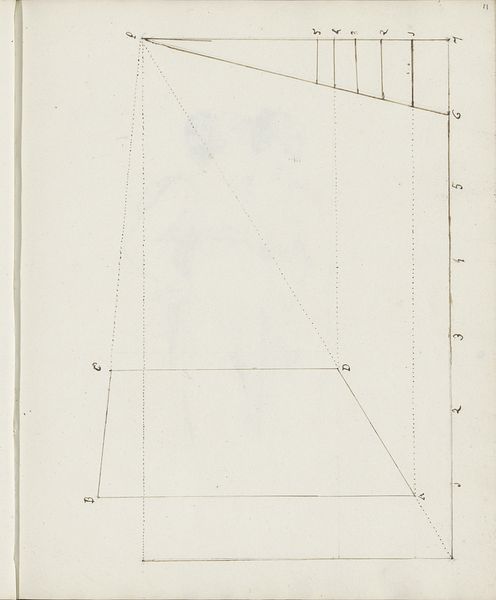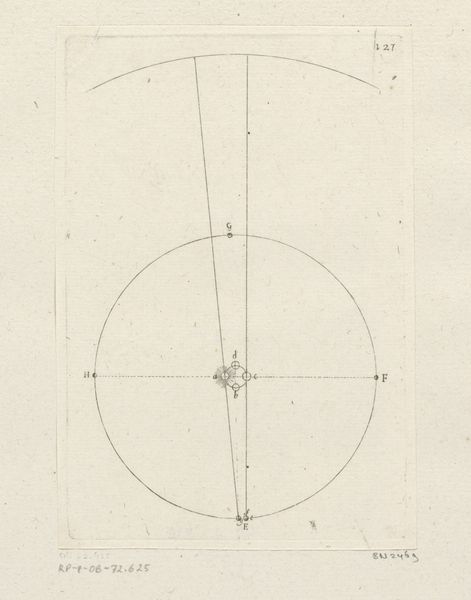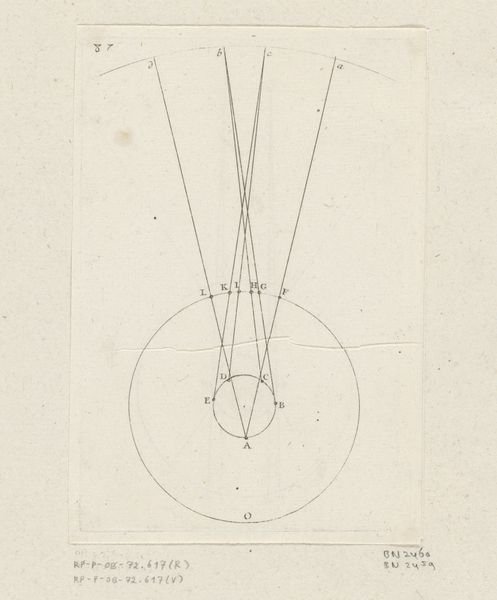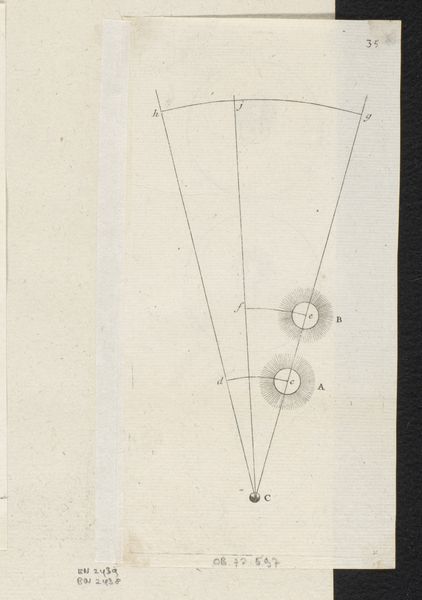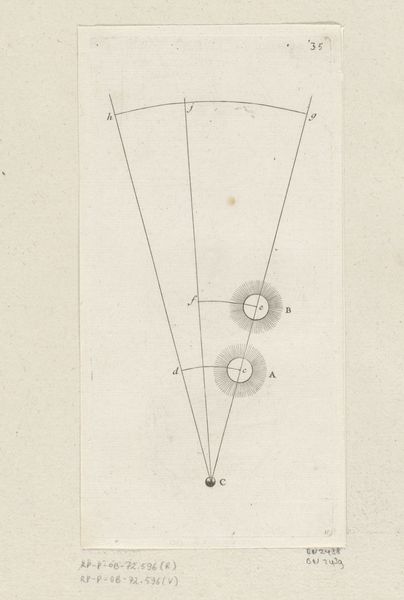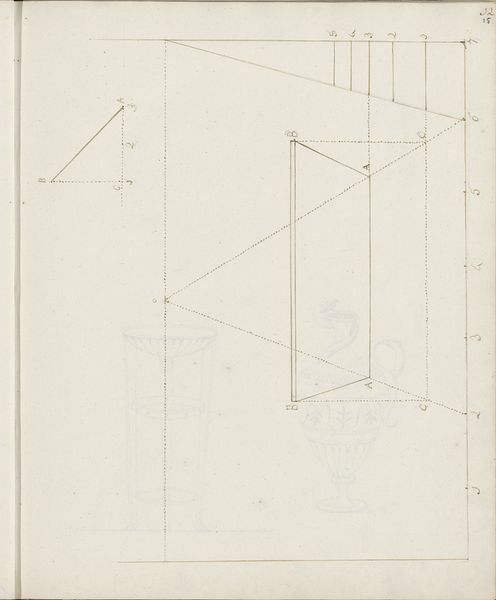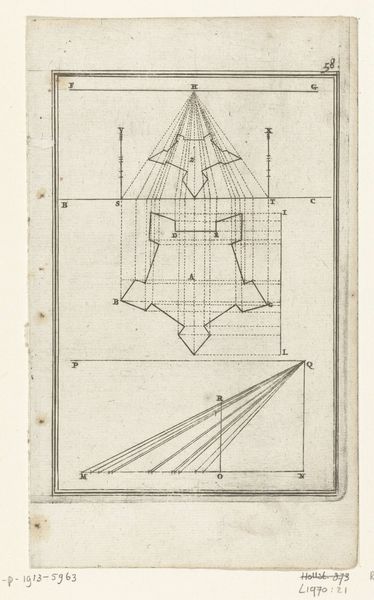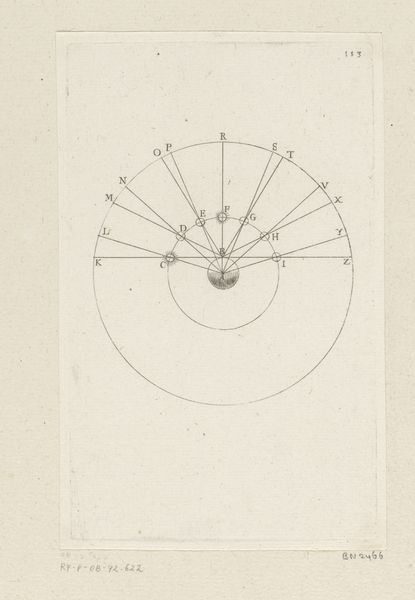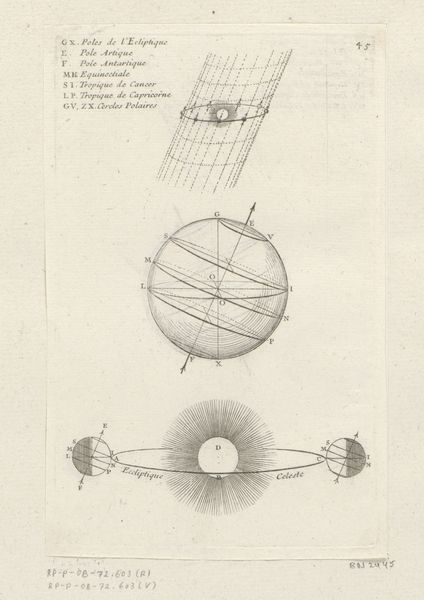
graphic-art, print, engraving
#
graphic-art
#
aged paper
# print
#
old engraving style
#
hand drawn type
#
personal sketchbook
#
geometric
#
academic-art
#
engraving
Dimensions: height 172 mm, width 107 mm
Copyright: Rijks Museum: Open Domain
Curator: Welcome. Here we have "As van de ecliptica en de rotatie van de Aarde rond de Zon" dating back to 1706. It's an engraving by Sébastien Leclerc I and it resides here at the Rijksmuseum. Editor: It’s strikingly stark. The lines, precise and clean, create this rather cold, detached, dare I say, masculine aura. Is this typical for Leclerc? Curator: Leclerc, indeed, was known for these kinds of illustrations of technical, scientific and astronomical themes. In many ways he reflected and propelled the scientific revolutions happening around him. Editor: I see that. And if you think about that particular historical context, astronomy was central to so much more than just the scientific world. We’re talking about navigation, empire-building, and the general rise of a certain Western form of power over the world. Curator: Precisely. The Age of Exploration and Enlightenment intertwined so closely with advancements in astronomy and mathematics. This wasn't just about understanding the cosmos; it was about mapping and controlling our place within it, reinforcing colonial ideologies. It even mirrored religious reform. The ability to more accurately measure the solar system gave leverage to break the geocentric and theocentric norms. Editor: It's fascinating how the seeming simplicity of the engraving belies this complex network of power and knowledge. Even the visual organization emphasizes a sense of order, perhaps a wish for control in the vast universe? The choice of the line as a primary element... Curator: Consider that linear perspective, developed during the Renaissance, does much the same in visual space. But now we see the line used here in abstraction to dissect a very real cosmos into understandable and, therefore, seemingly governable parts. Editor: I’m left thinking about how seemingly objective artistic depictions of nature were used as ideological tools to promote societal advancements and hierarchies, like the shift away from theological certainties, colonization and Western dominance in this very moment in time. The objective became intensely subjective, intertwined with culture and politics. Curator: I agree completely. This print prompts reflection on art's participation in both the pursuit of knowledge and the projection of power, shaping the way we perceive and interact with the world around us.
Comments
No comments
Be the first to comment and join the conversation on the ultimate creative platform.
